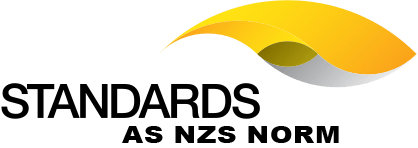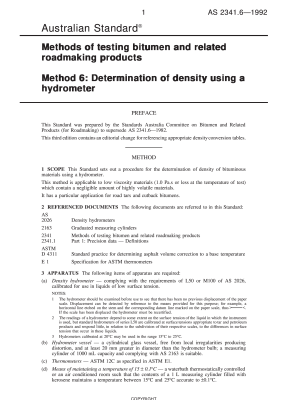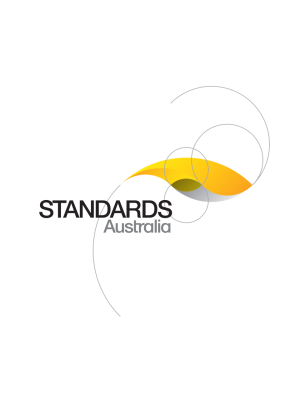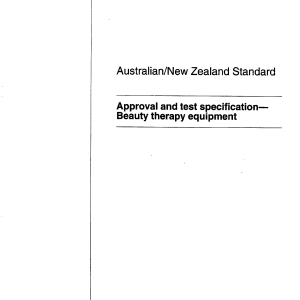🔍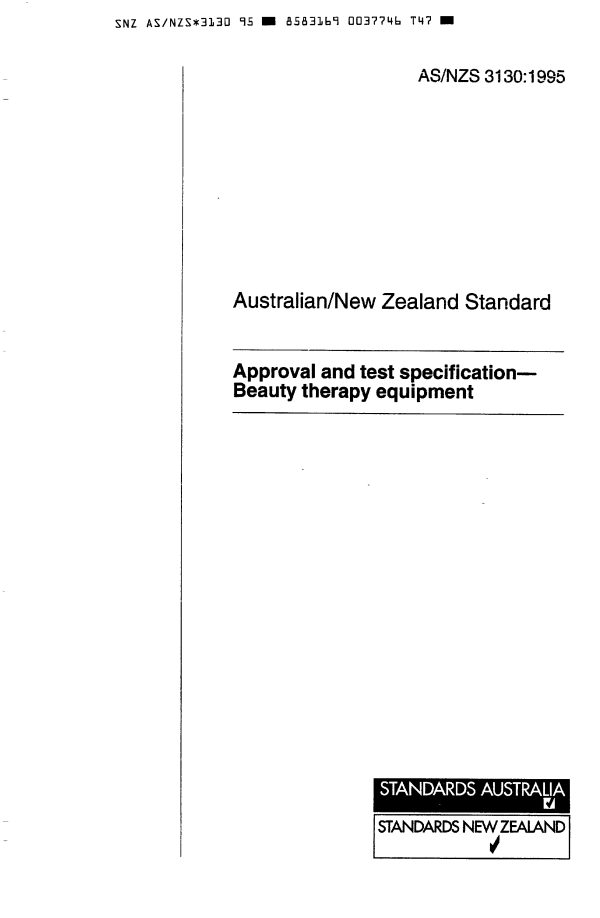

Purchase the full subscription package now and enjoy a 40% discount, along with free updates for future editions.
AS/NZS 3130:1995
$125.14
Approval and test specification — Beauty therapy equipment
Prescribes the safety requirements for certain types of beauty therapy equipment powered by mains supply or batteries.
Table of contents
Header
About this publication
PREFACE
1 SCOPE
2 APPLICATION
2.1 General requirements of AS 3100
2.2 Specific requirements of this Specification
2.3 Requirements of other Specifications
3 REFERENCED DOCUMENTS
4 DEFINITIONS
5 DESIGN AND CONSTRUCTION
5.1 General
5.2 Equipment with liquid or gas containers
5.2.1 Safeguards in case of liquid spillage
5.2.2 Pressure release
5.2.3 Water heaters
5.3 Provision of overcurrent protection
5.4 Identification of wiring
5.5 Regulating devices and switches
5.5.1 General
5.5.2 Fixing of operator-actuated controls
5.5.3 Limitation of movement
5.5.4 Intermediate positions of switches
5.5.5 Prohibition of ‘live’ shafts
5.5.6 Arrangement of controls for muscle stimulators
5.5.7 Visual indication of positions
5.5.8 Direction of operation of controls
5.5.9 Accuracy of output controls and instruments
5.5.10 Timing controls
5.5.11 Provision of isolating switches
5.5.12 Prohibition of supply switches in flexible cords
5.5.13 Hand-operated and foot-operated cord-connected switches
5.6 Plugs and sockets
5.6.1 General
5.6.2 Segregation of terminals
5.6.3 Polarization
5.6.4 Restrictions on interchangeability
5.6.5 Earthing contact
5.7 Direct current component from a.c. appliances
5.8 Stability
5.8.1 General
5.8.2 Portable equipment
5.8.3 Transportable equipment (other than portable equipment)
6 PROTECTION AGAINST MECHANICAL AND ELECTRICAL FAILURE
6.1 General
6.2 Internal components
6.2.1 General
6.2.2 Support and security
6.2.3 Securing of internal wiring and inter-connecting cables
6.2.4 Insulation of internal wiring
6.2.4.1 Functional insulation
6.2.4.2 Double insulation
6.2.4.3 Single layer equivalent
6.2.4.4 Higher grade insulation
6.2.5 Segregation of internal wiring
6.3 Behaviour and reliability under normal conditions
6.4 Protection against mechanical hazards
6.5 Glass electrodes
6.6 Enclosure and location of batteries
6.7 Provision for cleaning and disinfecting applicator leads and electrodes
6.8 Construction of terminals for applicator leads
6.9 Equipment having provision for more than one supply voltage
6.10 Equipment with alternative means of supply
6.11 Transformers
6.12 Motor operated appliances
7 PROTECTION AGAINST ELECTRIC SHOCK HAZARDS
7.1 General
7.2 Construction and enclosure
7.3 Protective and functional earthing
7.4 Accessible conductive parts
7.4.1 Class I (single-insulated) equipment
7.4.2 Class II (double-insulated) equipment
7.4.3 Class III equipment
7.5 Insulation of output circuits intended to make electrical connection to clients or users
7.6 Leakage currents
7.7 Electrical outputs delivered to the client
8 PROTECTION AGAINST HEAT AND FIRE AND OTHER PHYSICAL HAZARDS
8.1 General
8.2 Surface temperatures
8.2.1 Guarding
8.2.2 Equipment parts in contact with the client
8.2.3 Accessible surfaces of parts held during use
8.3 Temperature control devices
8.3.1 Thermostats
8.3.2 Protection against overheating
8.4 Equipment with heating devices
8.4.1 Enclosure
8.4.2 Metal-clad immersion elements
8.5 Electromagnetic radiation
8.6 Ozone
8.7 Air pressure
8.8 Steam
8.9 Resistance to ignitability and combustion propagation
9 EQUIPMENT MARKING AND ACCOMPANYING DOCUMENTATION
9.1 General
9.2 Special purpose plug socket
9.3 Marking of fuses
9.4 Marking of controls
9.5 Equipment with d.c. outputs
9.6 Accompanying documentation
9.6.1 General
9.6.2 General information to be provided with the instructions for use
9.6.3 Parts in contact with the person being treated
9.6.4 General technical description
10 TESTS
10.1 Tests
10.2 Insulation resistance and leakage current tests
10.2.1 Insulation resistance
10.2.2 Leakage currents
10.3 High voltage test
10.4 Stability test for transportable equipment
10.4.1 Physical arrangement
10.4.2 Tilt test
10.4.3 Overturn test
10.5 Fixing of controls
10.6 Mechanical strength of hand-held switches
10.7 Protection against mechanical hazards
10.8 Strength of enclosure
10.9 Determination of ignitability and combustion propagation
11 OPERATION OF EQUIPMENT
11.1 Ozone and steam generators
11.2 Lasers
11.3 State legislation
11.4 Therapeutic benefit
APPENDIX A
APPENDIX B
B1 GENERAL
B2 INSTRUMENTATION
B3 TEST CONDITIONS
B4 REPORTING
APPENDIX C
APPENDIX D
D1 GENERAL
D2 INSTRUMENTATION
D3 TEST CONDITIONS
D4 REPORTING
APPENDIX E
E1 SCOPE
E2 MONITOR METHOD
E3 DETECTOR TUBE METHOD (DERIVED FROM CSA ELECTRICAL BULLETINS 750B AND 750C)
E4 REPORTING
Cited references in this standard
Please select a variation to view its description.
| Published | 05/08/1995 |
|---|---|
| Pages | 24 |
Please select a variation to view its pdf.
